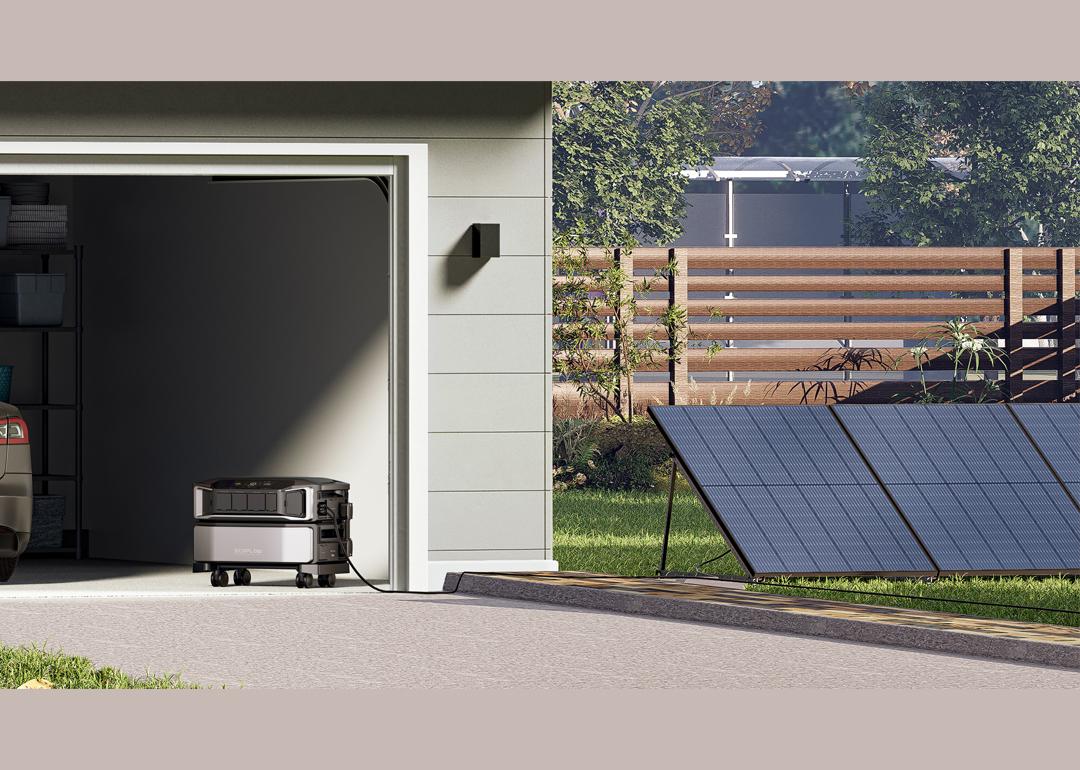
Beyond the generator: Home battery backups gain popularity as power grid failures rise
Beyond the generator: Home battery backups gain popularity as power grid failures rise
From California's wildfires to Florida's hurricanes, North America's aging power grid faces unprecedented strain. Millions of households now endure more frequent and prolonged blackouts — disruptions that leave families without lights, refrigerated medication or internet access when they need it most. In response, more homeowners are turning to whole-home battery backup systems as a resilient, sustainable and cost-effective solution.
When wildfires ravaged Southern California earlier this year, Jason Bulquerin's neighborhood was plunged into darkness. He was safely away from the burning regions, but transmission lines delivering power to his area were destroyed by one of multiple fires tearing through Altadena, the Pacific Palisades and other parts of Los Angeles County miles away.
Despite this, the lights never dimmed at Bulquerin's home even as it took days for utility crews to restore service. That's because Bulquerin is among a growing number of Americans using the latest in battery technology to power lights, appliances and entire homes during blackouts due to grid instability and increasingly unpredictable weather, EcoFlow reports.
Why Blackouts Are Here to Stay: From Extreme Weather to Overloaded Grids
Extreme weather is no longer "extreme." NOAA forecasts a 60% chance of an above-normal Atlantic hurricane season in 2025, and power outages are expected to increase dramatically, with 13 to 19 named storms. Out of those, three to five could be major hurricanes. These aren't isolated events. In 2024, there were 27 confirmed disaster events with losses exceeding $1 billion each to hit the U.S.
Compounding the problem is a power grid weakened by decades of neglect. Federal projections warn that without a major investment in energy infrastructure, power outage hours could rise 100-fold by 2030.
Making matters worse, demand is exploding — driven by AI data centers that guzzle electricity, electric vehicles plugging in by the millions and smart homes that never stop drawing power. AI alone could double U.S. electric demand by 2030, pushing an already overstretched system to the brink. The Electric Power Research Institute reports that data centers could consume 9% of the nation's electricity by 2030 — double their current usage.
What Are Whole-Home Battery Systems? Breaking Down the Technology
At their core, whole-home battery systems are simple: They store electricity (either from the grid or solar panels) and release it when the grid fails. But unlike the noisy, gas-guzzling generators of the past, they’re clean, quiet and nearly maintenance-free. When an outage hits, they switch on automatically, so you might not even notice the grid went down.
Today's systems come in three principal schemes, each tailored to different needs:
Modular, portable systems. These are "build-as-you-go" solutions. Start small, powering only essentials (fridge, lights, medical devices) and plugging devices directly to portable batteries. You can add more battery capacity later if you want to cover your whole home.
Panel-integrated systems. These tie directly into your home's electrical panel, so you can pick which circuits to prioritize and track energy use in real time via an app. No more tangled extension cords — just seamless power when you need it.
Solar-plus-storage system. Pair a battery with solar panels on your rooftop, backyard, or balcony, and you’re not just preparing for outages — you’re cutting your monthly bills, too. The solar panels charge the battery with free, renewable energy during the day, so you can use that power instead of buying from the grid.
Industry and government data shows how fast this shift is happening. The share of new residential solar installations including battery storage more than doubled in 2024, from less than 12% in 2023 to 28%, according to the Solar Energy Industries Association. And in wildfire-prone California, the U.S. government reports the rate is even higher at over half as of last year, which includes 40,000 new systems installed between 2023 and 2024.
More homeowners are turning to whole-home battery backup systems to ensure they have access to power during emergencies. While some backup systems don't require an associated rooftop solar system, many buyers pair battery and solar in order to maximize both their solar investments and their backup power duration.
Getting Word Out While Responding to Disaster
Whole-home systems aren't just protecting individual families — they're also making communities more resilient. Nonprofits that lead disaster response are teaming up with tech companies to turn these batteries into tools for collective preparedness and recovery.
Footprint Project, a New Orleans-based nonprofit focused on building disaster resiliency and response to weather events with green energy solutions, partnered with companies like EcoFlow to upgrade emergency response trailers from local fire departments with batteries and solar panels. These trailers can now roll into fire zones in California and hurricane-hit areas of North Carolina to power rescue tools and communications equipment.
In Canada, the Alberta Lions Emergency Response Team (A.L.E.R.T.), is also equipping itself with donated products to power microgrids for rescue and recovery operations.
Battery Systems are a Greener, Cleaner Alternative to Backup Generators
While fuel-burning generators have been traditionally used for power backup during emergencies, battery systems provide a cleaner, quieter solution. Smaller portable batteries can also be used in apartments and condos, whose tenants often cannot accommodate a generator. New products are also coming online to serve homeowners in need of whole-home load handling and flexible capacity systems.
Bulquerin, the California homeowner, said that since experiencing the extended outage during this year's wildfires, his neighbors have been looking to install backup batteries, including residents new to backup power or those wanting to upgrade from gas.
This story was produced by EcoFlow and reviewed and distributed by Stacker.



